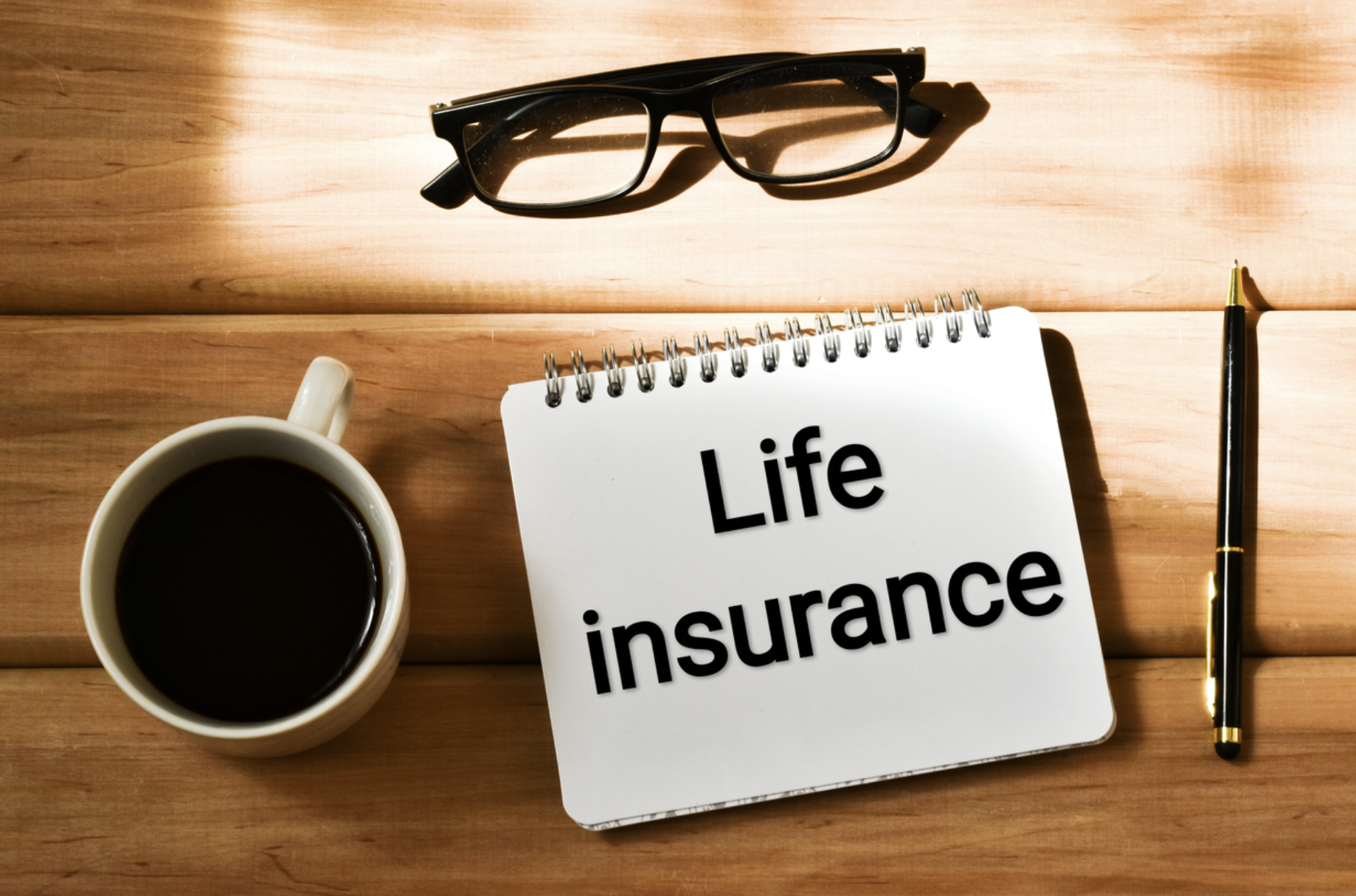Term life insurance in San Diego— provided by Kai-Zen Experts — is a type of life insurance that provides coverage for a specified term or period. It is designed to offer financial protection to the policyholder’s beneficiaries in the event of the insured’s death during the term of the policy. If the insured person passes away during the term, the death benefit is paid out to the beneficiaries tax-free.

KEY FEATURES OF TERM LIFE INSURANCE IN SAN DIEGO
Coverage Period
Term life insurance provides coverage for a specific term, such as 10, 20, or 30 years. Once the term expires, the coverage ends, and there is no cash value associated with the policy.
Death Benefit
The death benefit is the amount of money paid out to the beneficiaries if the insured dies during the term of the policy. This benefit is generally paid out as a lump sum.
Premiums
Premiums for term life insurance are typically lower than those for permanent life insurance, especially in the early years of the policy. However, the premiums are fixed for the term and may increase if the policy is renewed.
Renewability
Some term life insurance policies offer the option to renew at the end of the term, but the premiums may increase significantly.
Convertibility
Many term life insurance policies allow the policyholder to convert the policy into a permanent life insurance policy without undergoing a medical examination. This can be a valuable feature for individuals who want to extend their coverage beyond the initial term.
No Cash Value
Unlike permanent life insurance, term life insurance does not accumulate a cash value over time. If the policyholder outlives the term, there is no payout, and the premiums paid are not returned.
Term life insurance is often chosen by people who need coverage for a specific period, such as during the years when they have financial responsibilities like a mortgage, education expenses for children, or other significant debts.
It provides a cost-effective way to ensure financial protection during these specific years, without the long-term commitment and higher premiums associated with permanent life insurance.
Read More From the Kai-Zen Insurance Experts Blog:

What is the “Best” Amount of Term Life Insurance?
Figuring out the best amount of term life insurance is a crucial decision that requires careful consideration of various factors. It should include consideration of your financial situation, family needs, and future obligations. While there isn’t a one-size-fits-all answer, a thoughtful analysis can help you arrive at an appropriate coverage amount that provides financial security for your loved ones.
That’s why Kai-Zen Life Insurance Experts are here. We’ll delve into key considerations to guide you in determining the optimal amount of term life insurance.
Income Replacement

One of the primary purposes of life insurance is to replace lost income in the event of the insured’s death. Consider your current income and the financial needs of your dependents. Many financial advisors recommend a coverage amount that is 10 to 15 times your annual income. This multiplier provides a buffer to help your family maintain their standard of living and meet financial obligations if you’re no longer there to provide for them.
Outstanding Debts
Assess your outstanding debts, including mortgages, car loans, and credit card balances. Your life insurance coverage should be sufficient to cover these debts, ensuring that your family isn’t burdened by financial liabilities in your absence. This can contribute to a smooth transition and allow your loved ones to maintain their lifestyle without the stress of debt payments.
Education Expenses
If you have children, consider the cost of their education, including tuition, fees, and other related expenses. Your life insurance policy should factor in these future costs, ensuring that your children have the financial means to pursue their educational goals, even if you’re not there to contribute directly.
Living Expenses
Evaluate your family’s current and anticipated living expenses. This includes day-to-day costs such as groceries, utilities, and healthcare. A comprehensive life insurance policy should cover these expenses to alleviate financial strain on your loved ones during a challenging time.
Funeral and Final Expenses
Funerals and other end-of-life expenses can be significant. Ensure that your life insurance policy provides for these costs, sparing your family from the additional financial burden associated with your final arrangements.
Future Financial Goals
Consider any future financial goals, such as buying a home, starting a business, or saving for retirement. Your life insurance coverage should account for these aspirations, providing a financial safety net to help your family achieve these objectives in your absence.
Inflation and Cost of Living
Factor in the impact of inflation and the rising cost of living over time. A coverage amount that might seem adequate today may fall short in the future. Consider choosing a policy with a benefit that increases over time or regularly reassessing your coverage needs to ensure they remain sufficient.
Spousal Income and Other Resources
If your spouse or dependents have their sources of income or financial resources, adjust your life insurance coverage accordingly. The goal is to bridge the financial gap left by your absence and provide support where needed.
Healthcare and Special Needs
If you have dependents with special healthcare needs or disabilities, factor in the associated costs. Ensure that your life insurance coverage considers the long-term financial requirements to support your well-being.
Risk Tolerance and Comfort Level
Assess your risk tolerance and comfort level. While it’s essential to have adequate coverage, you also want to avoid overextending your budget. Striking a balance that aligns with your financial goals and comfort level is key.
Determining the best amount of term life insurance involves a holistic evaluation of your current financial landscape, future aspirations, and the needs of your loved ones. Consider the following: income replacement, outstanding debts, education expenses, living costs, final expenses, future goals, inflation, existing resources, healthcare needs, and personal comfort.
Then you can tailor your San Diego term life insurance coverage to provide a solid financial foundation for your family in the face of life’s uncertainties. Regularly reassessing your coverage needs ensures that your life insurance remains a relevant and effective tool for securing your family’s financial future.
What are the Advantages and Disadvantages of Term Life Insurance?

Term life insurance offers specific advantages and disadvantages, making it important for you to carefully weigh your financial needs and preferences when considering this type of coverage. Here’s an exploration of the pros and cons of term life insurance:
Advantages of Term Life Insurance
Affordability
One of the primary advantages of term life insurance is its affordability, especially when compared to permanent life insurance options. Term policies generally have lower premiums, making them accessible to individuals who need coverage but may have budget constraints.
Simple and Transparent
Term life insurance is straightforward to understand. The terms are clear, and there is no cash value component or investment features involved. This simplicity makes it an attractive option for those who prefer a no-frills, pure insurance approach.
Customizable Terms
Term life insurance policies offer flexibility in terms of coverage duration. Policyholders can choose a term that aligns with their specific needs, such as the years they expect to have significant financial responsibilities, like a mortgage or children’s education.
Income Replacement
Term life insurance serves as an effective tool for income replacement. If the insured passes away during the policy term, the death benefit provides financial support to beneficiaries, helping them maintain their standard of living and meet ongoing financial obligations.
Convertible Options
Many term life insurance policies come with convertibility features, allowing policyholders to convert their term policy into a permanent life insurance policy without undergoing a medical examination. This can be valuable if circumstances change, and a more permanent solution becomes desirable.
Policy Lapses Yield No Return
If the policyholder allows the term life insurance policy to lapse by not paying premiums, there is no return on the premiums paid. This is in contrast to some permanent policies that may have a surrender value even if the policy is discontinued.
In conclusion, term life insurance is a practical and cost-effective solution for individuals seeking straightforward protection for a specific period. Its advantages lie in affordability, simplicity, and flexibility, while its disadvantages include the lack of cash value accumulation and the potential for increased premiums upon renewal. The suitability of term life insurance depends on individual financial goals, preferences, and the specific needs of the insured and their beneficiaries.
Disadvantages of Term Life Insurance
No Cash Value Accumulation
Unlike permanent life insurance, term life insurance does not accumulate cash value over time. If the policyholder outlives the term, there is no return on the premiums paid. Some individuals prefer the cash value component found in certain permanent policies.
Premiums Increase with Renewal
While term life insurance offers lower initial premiums, they can increase significantly if the policy is renewed. This can be a disadvantage for individuals who need coverage beyond the initial term, as the cost may become prohibitive, especially as the insured gets older.
Lack of Permanent Coverage
Term life insurance provides coverage for a specified term; if the policyholder outlives that term, there is no payout. This may disadvantage those seeking coverage that extends throughout their lifetime, including providing for heirs or leaving a legacy.
Limited to Death Benefit
Term life insurance focuses solely on providing a death benefit. It does not offer the living benefits or investment features found in some permanent life insurance policies. Individuals seeking a policy with cash value growth or additional living benefits may find term insurance less appealing.
No Equity or Loan Options
Unlike certain permanent life insurance policies that allow policyholders to borrow against the cash value or use it as collateral for loans, term life insurance does not offer these equity-building options. This can be a drawback for those looking for additional financial tools.
At What Age Does Term Life Insurance End?
The age at which term life insurance ends depends on the term length chosen when purchasing the policy. Term life insurance is designed to provide coverage for a specified period, and once that term expires, the policy terminates. Common term lengths are 10, 20, 25, or 30 years, but they can vary depending on the insurance provider.
For example:
- 10-Year Term: The coverage lasts for 10 years.
- 20-Year Term: The coverage lasts for 20 years.
- 30-Year Term: The coverage lasts for 30 years.
The coverage typically ends when the policyholder reaches the specified age at the end of the term. For instance, if someone purchases a 20-year term life insurance policy at the age of 30, the coverage would end when they turn 50. After the term expires, the policyholder can choose to renew it, convert it to a permanent life insurance policy (if the policy has a conversion feature), or let it lapse.
It’s important to note that renewing a San Diego term life insurance policy often involves higher premiums, as the individual is older and may pose a higher risk to the insurance company. Additionally, some term life insurance policies may offer the option to convert to a permanent policy without undergoing a medical examination, providing a way to maintain coverage beyond the original term.
Ultimately, the age at which term life insurance ends is determined by the length of the chosen term, and people should carefully consider their financial needs and obligations when selecting a term length for their life insurance policy.
What Happens if You Outlive Your Term Life Insurance?
If you outlive your term life insurance policy, several possible outcomes depend on the terms and features of your specific policy.
Coverage Ends
The most common scenario is that your coverage ends once the term expires. If you have chosen a 20-year term, for example, and you outlive those 20 years, the policy terminates, and there is no longer any death benefit associated with it. A viatical settlement is an option, however. It may be possible to sell your policy and receive a majority of the death benefit in cash instead of letting the policy lapse.
Renewal Option
Some term life insurance policies offer a renewal option, allowing you to extend coverage beyond the original term. However, be aware that the premiums for a renewed policy are often significantly higher because they are based on your age at the time of renewal. Renewal may be a practical option if you still need coverage, but it’s essential to consider the cost carefully.
Conversion to Permanent Life Insurance
Certain term life insurance policies include a conversion feature, allowing you to convert your term policy into a permanent life insurance policy without undergoing a medical examination. This can be a valuable option if your life insurance needs have changed, and you want coverage that lasts for your entire lifetime.
No Cash Value
It’s important to note that term life insurance typically does not accumulate cash value. If you outlive your policy, there is no cash payout or return of premiums, as the primary purpose of term insurance is to provide a death benefit to beneficiaries if the insured passes away during the term. Again – a viatical settlement may be the exception to this rule.
Reviewing your term life insurance policy carefully and understanding its terms, including any renewal or conversion options is crucial. Additionally, consider your changing financial needs and whether a different type of life insurance, such as permanent life insurance, might be more suitable if you require coverage for a longer duration or want a policy with cash value accumulation.
Ready to get started on your Term Life Insurance Policy In San Diego with Kai-Zen Insurance Experts?











